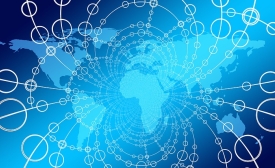social media
While Prime Minister Narendra Modi remained intact in the list of top 10 leaders in the world with the most Twitter followers, it was the Prime Minister's Office (PMO) and External Affairs Minister Sushma Swaraj who broke into the list for the first time, an annual global Twitter ranking has revealed. [...] "@SushmaSwaraj is the most followed female world leader with 5 million followers at 10th spot

Tips from Corneliu Bjola on addressing crisis communication and online backlash.
Over the past five years, Twitter has become the ultimate channel for digital diplomacy for world leaders and governments. It is the prime social network used by heads of state and government in 173 countries, representing 90 percent of all United Nations (UN) member states, according to Burson-Marsteller's Twiplomacy study, an annual global survey of world leaders on social media.
Prime Minister Narendra Modi always adds a personal touch to India's diplomacy. There are his well-known bear hugs with world leaders. On his foreign trips, the social media savvy Mr Modi posted a selfie taken with Chinese Premier Li Keqiang that attracted over 31 million hits on his Twitter-like Weibo account. [...] In his two years as Prime Minister, Mr Modi has sought to highlight India's soft power.
One of the leaders in the virtual race is Indian Prime Minister Narendra Modi [...] As prime minister, Modi also went viral with a selfie he took with China's Li keqiang, a move promptly dubbed as "selfie diplomacy."
Drafted by France to enhance the diplomatic communication and social media engagements of Uganda diplomats and foreign policy students, the French embassy has partnered with Victoria University to train diplomats in the country. The training, [...] will cover how social media is affecting diplomacy and also equip diplomats, mainly drawn from the Ministry of Foreign Affairs on the emerging digital concepts of diplomacy.







